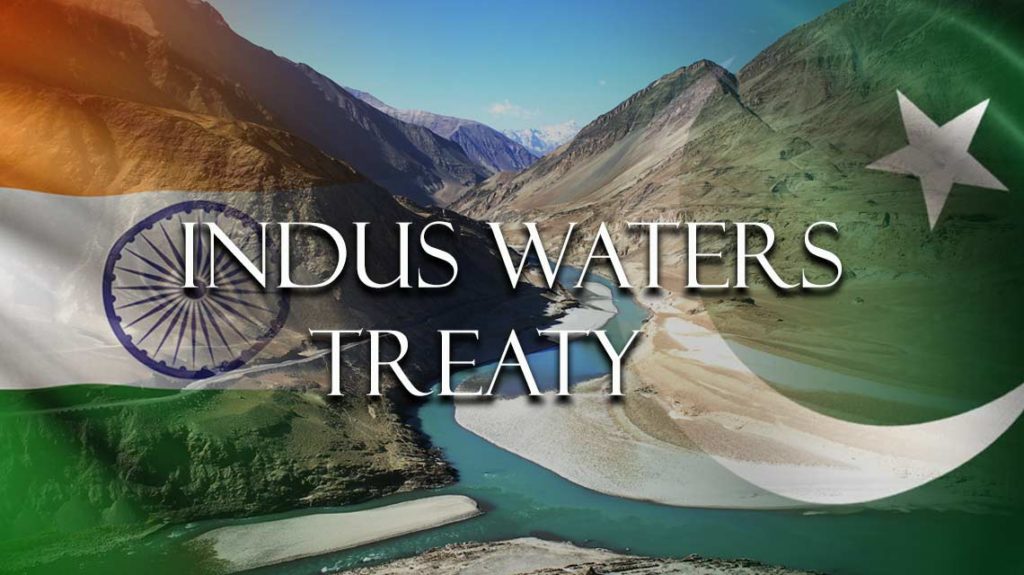24 Apr , 2025 By : Debdeep Gupta

In a move to cut down its diplomatic engagement with Pakistan in the aftermath of Pahalgam terror attacks, India on Wednesday announced a series of hard-hitting steps, including the immediate suspension of the decades-old Indus Waters Treaty with Pakistan.
At least 26 people, including two foreign tourists, were killed by a group of terrorists in one of the most deadly attacks on civilians in the Baisaran meadows in the upper reaches of Pahalgam in Jammu and Kashmir on Tuesday afternoon.
Among the series of punishing steps announced by Foreign Secretary Vikram Misri, the boldest one can be pinned to the suspension of the decades-old Indus Waters Treaty with Pakistan indefinitely. With this, the water supply from the Indus River and its distributaries - the Jhelum, Chenab, Ravi, Beas, and Satluj will be stopped. These rivers are the water supply for Pakistan and impact tens of millions of people in that country.
The Indus Waters Treaty was signed on September 19, 1960. The pact was signed between India and Pakistan, with the World Bank brokering the agreement. That treaty withstood three wars between India and Pakistan - in 1965, 1971, and 1999, but is now suspended indefinitely.
What is the Indus Waters Treaty?
Signed by the two sides in 1960 to share the water of the Indus and its tributaries, the treaty has survived wars, the ups and downs of bilateral ties, and is seen as one of the most enduring global water-sharing agreements. Brokered by the World Bank, then called the International Bank for Reconstruction and Development, the Indus treaty gave waters of the eastern rivers - the Ravi, Beas, and Sutlej to India and the western rivers- the Indus, Jhelum, and Chenab- to Pakistan. The Indus is the lifeblood of Pakistan’s agriculture, especially the Punjab and Sindh belt, where the bulk of the country’s farming is done.
How the treaty was under scrutiny after events affecting bilateral relations
On August 30, 2024, India served a notice on Pakistan, seeking a review and modification under Article XII (3) of the treaty. According to reports, India gave three reasons for seeking a review, one of which was the persistent cross-border terrorism in Jammu and Kashmir. The other concerns were the altered demographic and the need to accelerate clean energy development to meet India’s emission targets. But the treaty can only be reviewed if all parties —India, Pakistan, and the World Bank — agree.
The 2019 Pulwama attack prompted the Centre to speed up work on the long-pending Shahpurkandi Barrage on the Ravi River in Punjab’s Pathankot district, which borders Jammu and Kashmir.
According to multiple reports, the work on the dam is completed. First proposed in 1979, the dam was revived in 2018, and work picked up after the Pulwama strike. Some of the water used to flow to Pakistan, the lower riparian state, through the Madhopur headworks, which has now stopped. It was not much to begin with. India’s move is not violative of the treaty, but has been labelled as “water terrorism” by many in Pakistan.
How will today's decision impact Pakistan?
According to the Treaty, India has been given the right to generate hydroelectricity through run-of-the-river projects on the western rivers, subject to specific criteria for design and operation. The Treaty also gives right to Pakistan to raise objections to the design of Indian hydroelectric projects on western rivers. Pakistan roughly got 80% of the water in the Indus drainage system. India got about 3.3 crore of 16.8 crore acre-feet of water in the Indus system. At current usage, India utilises a little over 90% of its quota of Indus waters.
What are New Delhi's rights under the Treaty?
India can develop 13.4 lakh acres of irrigation in Jammu and Kashmir and Ladakh under the Indus Waters Treaty. It has only 6.42 lakh acres of land irrigated in the Union Territories. Further, the treaty allows India to store 3.60 million acre-feet of water from the western rivers — Jhelum, Indus, and Chenab. There is practically no storage capacity developed so far in Jammu and Kashmir. India is also allowed to build run-of-river dams
0 Comment